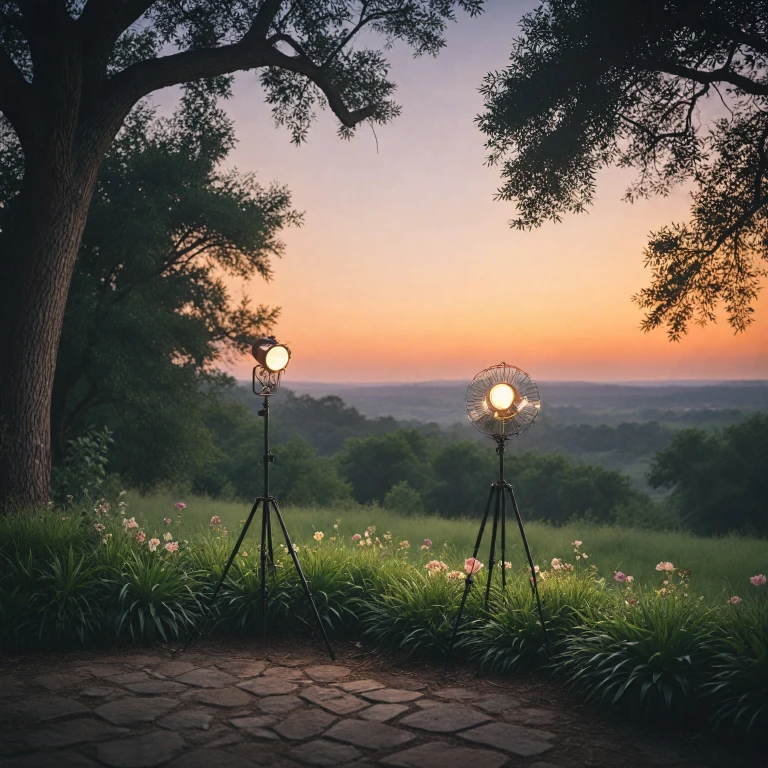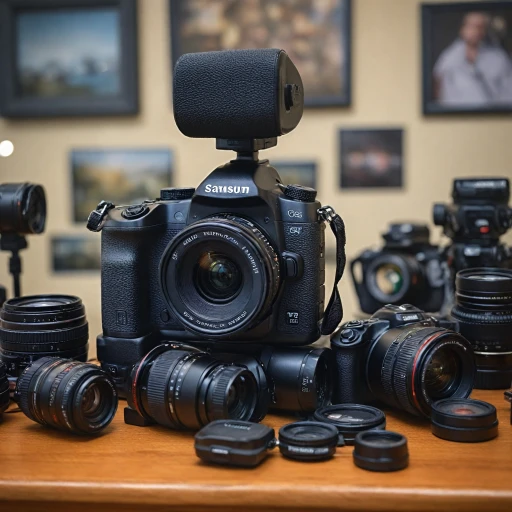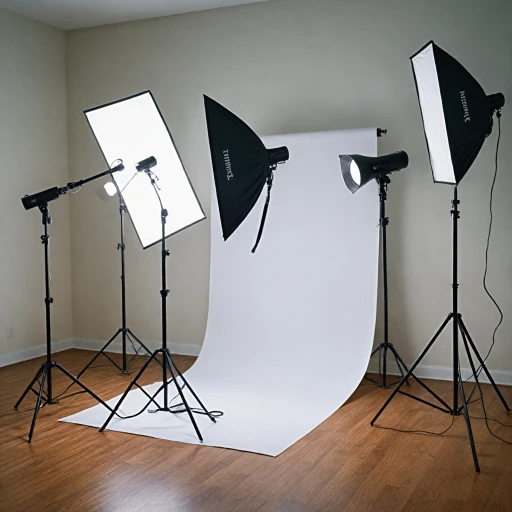Understanding the Importance of Light Stands
The Role of Lighting Accessories in Photography
In the world of digital photography, lighting is a crucial component that can make or break your shots. While many photographers invest heavily in cameras and lenses, the importance of good lighting, including the use of light stands, cannot be overstated. Light stands are essential accessories that extend your creative possibilities and offer the flexibility to achieve the perfect lighting setup for any photography scenario.
Understanding light stands begins with recognizing their function: to support, stabilize, and hold your lighting equipment such as flash units and heavier duty studio lights. This allows photographers to concentrate on capturing the perfect shot without worrying about the safety or positioning of their lights.
These stands come in various materials and constructions, from lightweight aluminum for regular use to robust stainless steel for more demanding environments. The type of light stand you choose can greatly influence the outcome of your photography projects, as each one is tailored to address specific needs and styles.
The right light stand helps maintain consistent lighting, whether shooting in a controlled studio environment, on location for portraits, or even for specialized baby photography. Reliable lighting accessories ensure the intended atmosphere is captured without unintentionally casting unwanted shadows or reflections.
Another key factor that pushes light stands as a vital piece of equipment is their ability to integrate seamlessly into your current setup. Look for stands that match the regular price range you are comfortable with. Consider options offering flexibility and ease of use, allowing you to adjust your lights and flash with precision.
Before making a purchase, reviewing the details of your desired light stand is integral—compare the original price, sale price, and unit price, and examine stand reviews from other photographers to ensure you are making a worthwhile investment.
Finally, incorporating the appropriate lighting kit can further enhance your results. It's not just about buying a stand with the best price current or the highest discount; it's about acquiring a piece that aligns with your creative vision and adapting it to the evolving demands of diverse photography projects.
Types of Light Stands for Different Needs
Various Light Stands Available for Your Photography Needs
When exploring the world of light stands, it's crucial to understand that the type of stand you choose has an impact on the quality and safety of your photography sessions. Different stands cater to different needs; understanding these will enhance your studio lighting setups significantly.
For those on a budget, aluminum light stands generally present a reliable choice with a balance of durability and affordability. These often come at a price sale that won't break the bank, yet they offer stability for your lighting gear. Their unit price varies depending on the height and weight capacity, so check the sale price during peak purchasing periods for potential savings.
Alternatively, stainless steel stands are a popular choice among professionals for their heavy duty nature and robust construction. Although these may have a higher original price, they’re worth the investment for those handling heavier lights or modifiers. Their longevity translates to value, making the price current a justifiable aspect of your gear.
If you're delving into photography lighting requiring frequent location shifts, consider a tripod stand with a baby pin and grip head, allowing for versatile adjustments. Stands equipped with interchangeable parts are particularly useful when balancing accessories.
With the vast array of options, reviews should be a part of your decision-making process. Look for stand reviews that detail the full details and view full specs to ensure the light stand you select aligns with your current and future needs.
Enhance your understanding of selecting the appropriate stand by considering factors such as tripod accessories that may complement your setup. This knowledge facilitates informed decisions that not only suit your immediate requirements but also your photography aspirations.
Choosing the Right Light Stand for Your Camera Setup
Considering Your Camera Setup Needs
When looking to enhance your photography, choosing the right accessories like a light stand is crucial. Different camera setups require specific types of stands, whether you're working in a studio or shooting outdoors. Understanding your needs will help you make the right decision.
For those using tripod stands frequently, a stand with an integrated grip head can provide added stability when adjusting lights for that perfect shot. It's essential to examine your current photography requirements, assess how much weight your setup can support, and whether you'll need additional accessories like a flash or baby pin adapter.
When considering durability, the material of the stand makes a significant difference. For example, stainless steel is excellent for heavy-duty use, while aluminum can be a lighter choice for regular setups and easier transportation. Don't forget to check the build quality and stand reviews for user experiences on reliability.
Another factor is the price. From the original price to the sale price, it's critical to inspect a stand's price current to see if it matches your budget. Evaluate the price range and ensure the unit price provides value in terms of features as reflected in its stand reviews.
If your light stand serves multiple purposes, such as enhancing a setup for landscape photography, check if it accommodates the transitions without hassle. The ability to easily switch from one environment to another is vital for those who frequently switch between studio and outdoor scenes, where different types of lighting conditions exist.
Setting Up Your Light Stand for Optimal Results
Setting Up for Success: Positioning and Adjustments
When it comes to setting up your light stand, the right positioning and adjustments are crucial for achieving optimal lighting results. Whether you're working with a studio setup or an outdoor shoot, understanding how to manipulate your light stands can make a significant difference in your photography.
First, consider the height and angle of your light stand. Most stands come with adjustable heights, allowing you to tailor the lighting to your specific needs. For instance, a tripod stand with a baby pin is ideal for low-angle shots, while a heavy duty stainless steel stand might be necessary for overhead lighting.
Securing Your Equipment
It's essential to ensure that your lighting equipment is securely attached to the stand. Use a grip head for added stability, especially when working with larger lights or flash units. This prevents any accidental falls that could damage your gear or affect the quality of your photos.
Adjusting for Different Lighting Conditions
Adaptability is key when setting up your light stands. Depending on the current lighting conditions, you might need to adjust the intensity and direction of your lights. For instance, in a studio environment, you might want to diffuse the light for a softer effect, while outdoor shoots might require more direct lighting to counteract natural light.
Remember, the goal is to enhance your subject's appearance and highlight details without overwhelming the scene. Regular practice and experimentation with different setups will help you become more proficient in using light stands effectively.
Final Checks and Balances
Before you start shooting, take a moment to review your setup. Check the stability of your light stands and ensure all accessories are properly secured. This quick review can save you from potential mishaps and ensure a smooth photography session.
Common Mistakes to Avoid When Using Light Stands
Avoiding Common Pitfalls with Light Stands
Using light stands effectively in your photography setup can significantly enhance your results. However, there are common mistakes that photographers often make, which can affect the quality of lighting and, consequently, the final image. Here are some pitfalls to be mindful of:
- Ignoring Weight Capacity: Each light stand has a specific weight capacity. Exceeding this can lead to instability and potential damage. Whether you're using a heavy-duty aluminum stand or a lighter tripod stand, always check the unit's original price and reviews for weight specifications.
- Improper Setup: Setting up your light stand incorrectly can lead to uneven lighting. Ensure that the stand is level and secure, especially when using accessories like a grip head or a baby pin. This setup helps maintain the desired view and light angle.
- Overlooking the Environment: The environment plays a crucial role in how light is distributed. Be aware of reflections, shadows, and other elements that might affect your lighting. Adjust the position of your light stands accordingly to achieve the best results.
- Neglecting Regular Maintenance: Regular maintenance is essential for the longevity of your equipment. Check for any wear and tear, especially if your stands are frequently used in studio settings or transported often. This ensures that the stands remain sturdy and reliable.
- Underestimating the Importance of Reviews: Before purchasing, consider the stand reviews to understand the experiences of other photographers. This can provide insights into the stand's performance, durability, and value for its current price compared to the original price.
By avoiding these common mistakes, you can maximize the effectiveness of your light stands, whether you're using them in a studio or on location. Remember, the right setup can make a significant difference in your photography lighting, so take the time to ensure everything is in place.
Maximizing the Use of Light Stands in Various Photography Scenarios
Making the Most Out of Light Stands
To maximize the effectiveness of light stands in photography, incorporating diverse strategies is crucial for varied scenarios. Here’s how you can best utilize light stands across different settings:- Studio Photography: In a studio environment, flexibility is key. Use sturdy, heavy-duty stands, possibly made from aluminum or stainless steel, to safely secure your lights and accessories. Equip your light stand with a grip head for precise adjustments and aim to position your light to prevent unwanted shadows.
- Outdoor Shoots: When shooting outdoors, opting for stands that can withstand wind and uneven surfaces is critical. Consider a tripod stand with a baby pin for extra stability of flash units. Understand the original price versus current sale price to find budget-friendly options without sacrificing quality.
- Event Photography: For events, portability is essential. Lightweight stands with quick-lock systems are ideal, allowing for rapid setup and adjustments. Regularly check the stand reviews to ensure they align with your requirements, be it for a wedding, concert, or corporate event.
- Product Photography: When showcasing products, ensure even, diffused lighting by adjusting the placement of your light stand. Using accessories such as softboxes or reflectors can enhance the view and appeal of the product.






